If there is a life that aspires to film, it is probably Mari Jászai's. If a well-known English or American person had experienced all that Mari Jászai did, there would have been plenty of films, novels and other works made dealing with their life. However, Mari Jászai was Hungarian, lived in Hungary, and even at home few people know her life, even though she was a manifestation of talent, diligence and incredible strength.
One of the greatest Hungarian tragediennes was born on 24 February 1850 in Ászár, Komárom-Esztergom County, and died on 5 October 1926, 95 years ago, at the János Sanatorium in Budapest, today's the Heart and Vascular Centre of SOTE Városmajor.
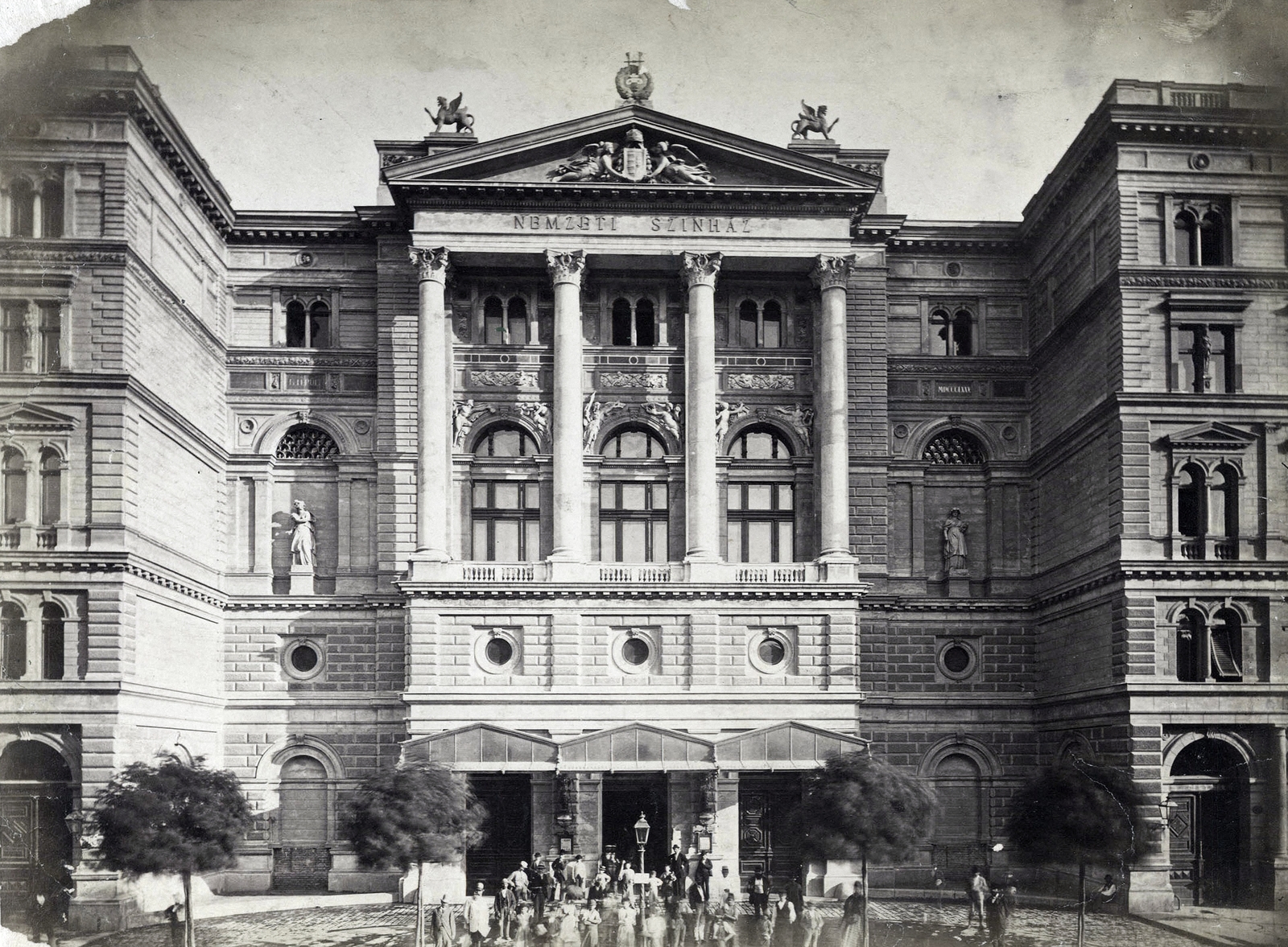
The National Theatre is located at 3 Rákóczi (Kerepesi) Road. Mari Jászai was a member of the company for 53 years. The recording was made between 1880-1890 (Photo: Fortepan/Budapest Archives, Reference No.: HU.BFL.XV.19.d.1.05.083 / Photos by György Klösz)
Ignotus wrote about Mari Jászai in the pages of the Nyugat after her death, in the 20th issue of 1926:
“It happened in front of the Hungarians in Vienna, now two years ago, who filled the many Konzerthaus halls to the last place, that Mari Jászai stepped on the podium, stopped there in a pale and old-fashioned cherry-coloured dress like a Hungarian Shakespearean queen, and recited Sándor Petőfi first, then Endre Ady. Like the forest of Birnam, the Hungarian crowd gathered and went to the podium, to show respect to the grande dame, in whom the Hungarian greatness still lived. Sons and even grandchildren would all come to her, including many who had never seen the majestic woman on stage, but saw, felt, inhaled the style, the great art of a national momentum, which successfully produced the great personalities for this momentum, for this art, for this style.”
Through the words of Igntotus, it can be seen how Mari Jászai was an individual. She had been the star of Hungarian acting for more than half a century, spending 53 years only in the National Theatre. She was a perfect Shakespeare heroine, but she played in Greek drama, Hungarian pieces, she was the first Eve of the Tragedy of Man, and - as Ignotus wrote - recited Petőfi, Ady. In addition, she wrote articles and short stories, translated, for example, Ibsen. She did not just have stage roles, as she also starred in movies. Her more famous roles were, in addition to the already mentioned Eve, Gertrudis in Bánk Ban, Nurse and Gloria Capulet in Romeo and Juliet, Electra, Antigone, Lady Macbeth, and all the major female roles in the entire drama literature until the early 20th century could be listed here.
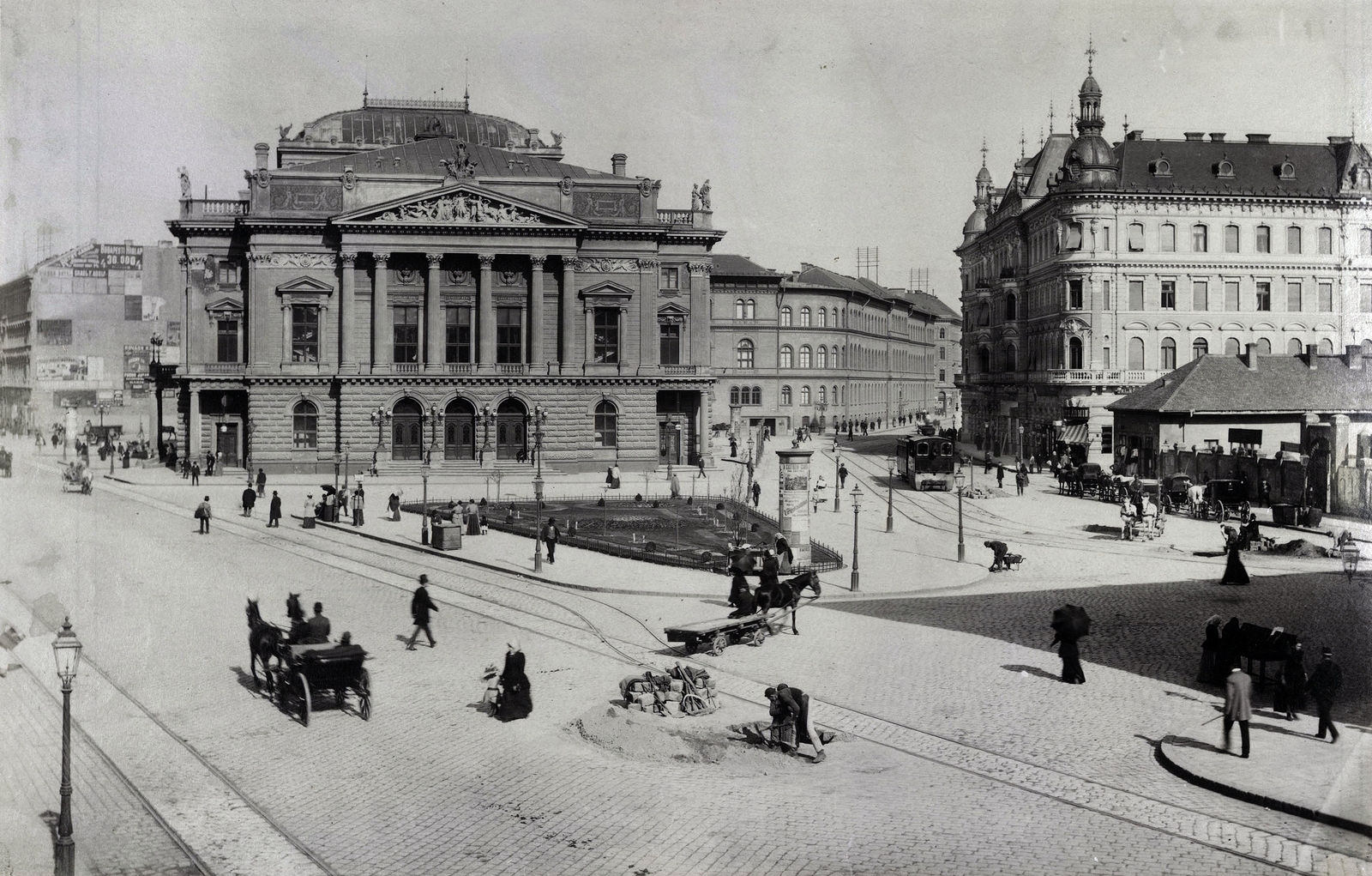
Blaha Lujza Square, the building was still the home of the People's Theatre when the picture was taken, but in 1908 the company of the National Theatre moved in. The recording of György Klösz was made in 1893 (Photo: Fortepan/Budapest Archives, Reference No.: HU.BFL.XV.19.d.1.07.020)
She first took the stage in 1866 as an extra in Székesfehérvár, Buda, Kolozsvár, and from 1872 in Pest at the National Theatre, of which she was a member for 53 years.
At that time, the National Theatre was still standing at the beginning of Rákóczi Road, at the corner of Múzeum Boulevard, at today's Astoria. Mari Jászai once gave this building as her postal address, she was so attached to the theatre. In 1908, the company had to move out of the life-threatening and demolished building. From its stones, which she had already bought, she made her tomb in advance in 1913.

The Comedy Theatre, where Mari Jászai spent a season. György Klösz's photograph of the building was made in 1900 (Source: Fortepan/Budapest Archives, Reference No.: HU.BFL.XV.19.d.1.08.108)
Then, of course, she played in the new National Theatre of Blaha Lujza Square, which was then intended to be temporary, at the People's Theatre at the junction of the Outer Ring Road and Rákóczi Road. She also spent a season at the Comedy Theatre in 1900-1901, but the Comedy Theatre was not right for her, so she returned to the National.
She was admired in her life, accumulated with prizes, she was a member of the Petőfi Society, in 1916 the Greguss Prize was awarded to her by the Kisfaludy Society.
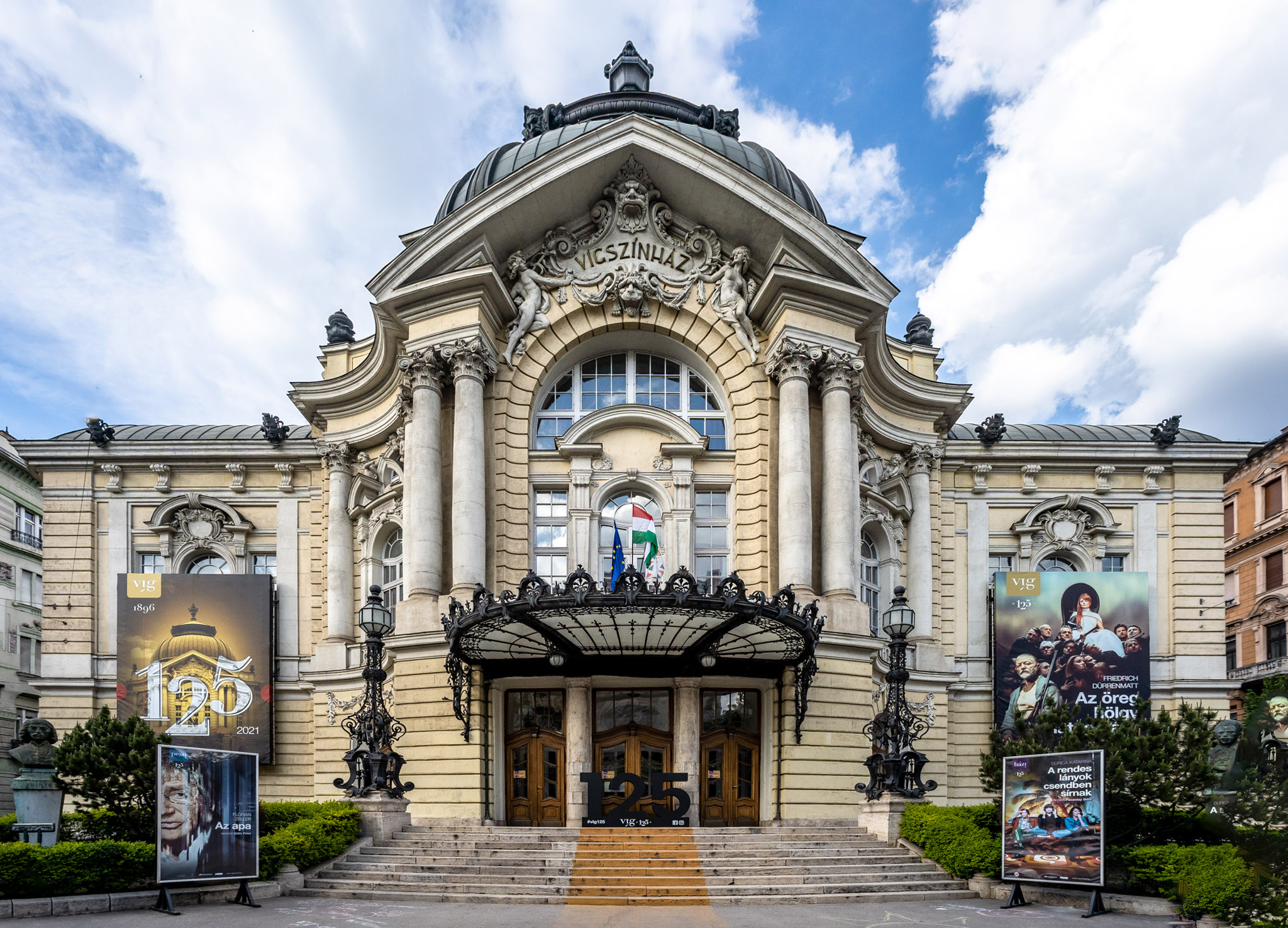 The Comedy Theatre nowadays (Photo: Balázs Both/pestbuda.hu)
The Comedy Theatre nowadays (Photo: Balázs Both/pestbuda.hu)
The above outlines a happy, successful, esteemed career. Indeed, Mária Krippel, born in Ászár in 1850, was on stage at the age of 16, as Mari Jászai, and her talent took her high. True, not everything succeeded in the actress' life, as her marriage at the age of 19 to the 10 years older actor-painter, Vidor Kassai, quickly fell apart. They were divorced after 2 years, and she never married again (but she did not despise the company of men).
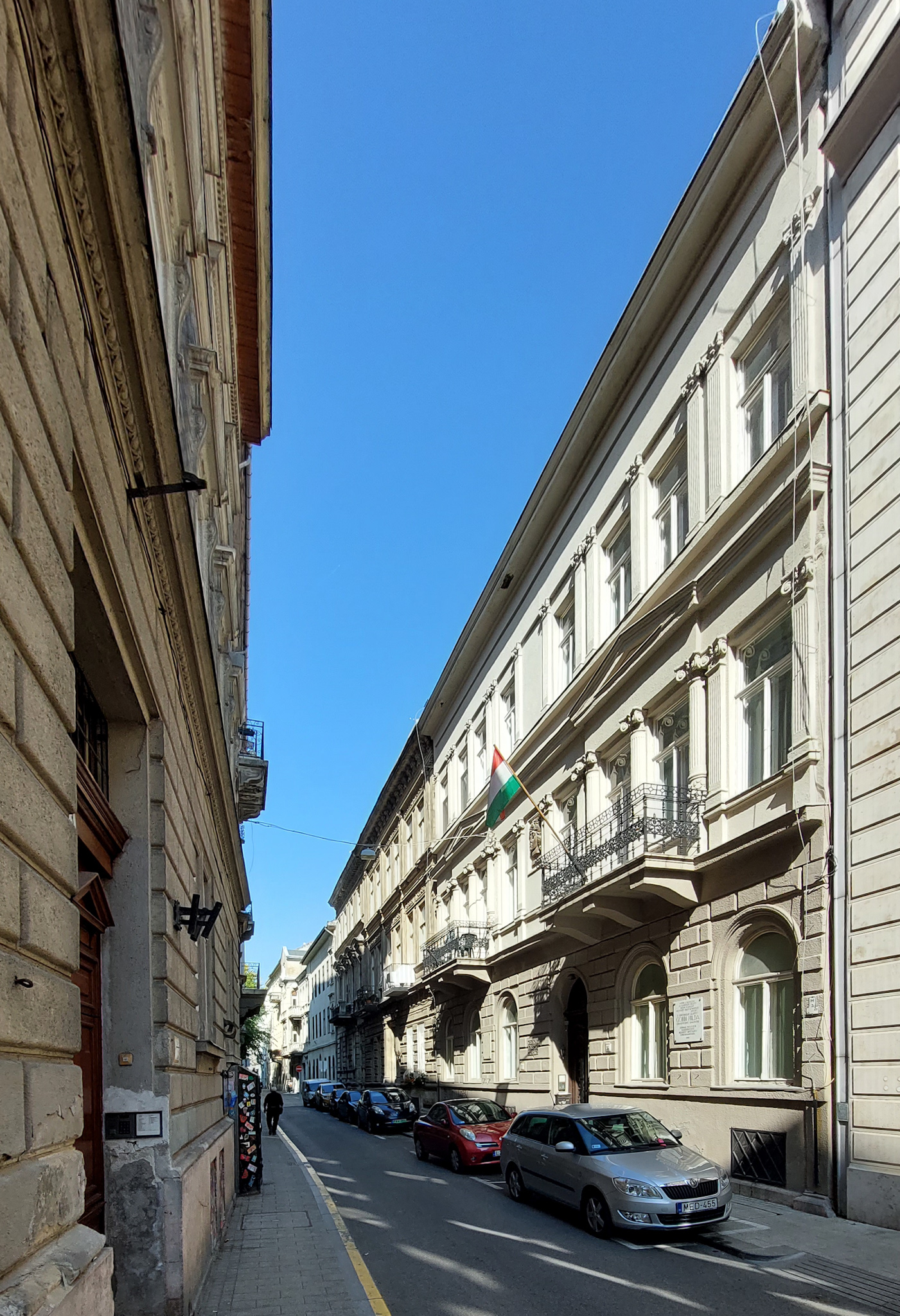
The Acting House named after Mari Jászai is located at 34 Magyar Street (Photo: Balázs Both/pestbuda.hu)
However, for the first 16 years of her life, the young Mari Jászai was not at all prepared to be one of the greatest actresses in the nation. His father, who lost his wife early, punished his 8 children with a rope soaked in salt water for every minor offence. Mari Jászai was already working at the age of 5, she was given in as a servant, she had to work hard for the daily wage. In addition, she studied, read, and already then, instinctively, if she had the opportunity, she acted to her schoolmates and friends.
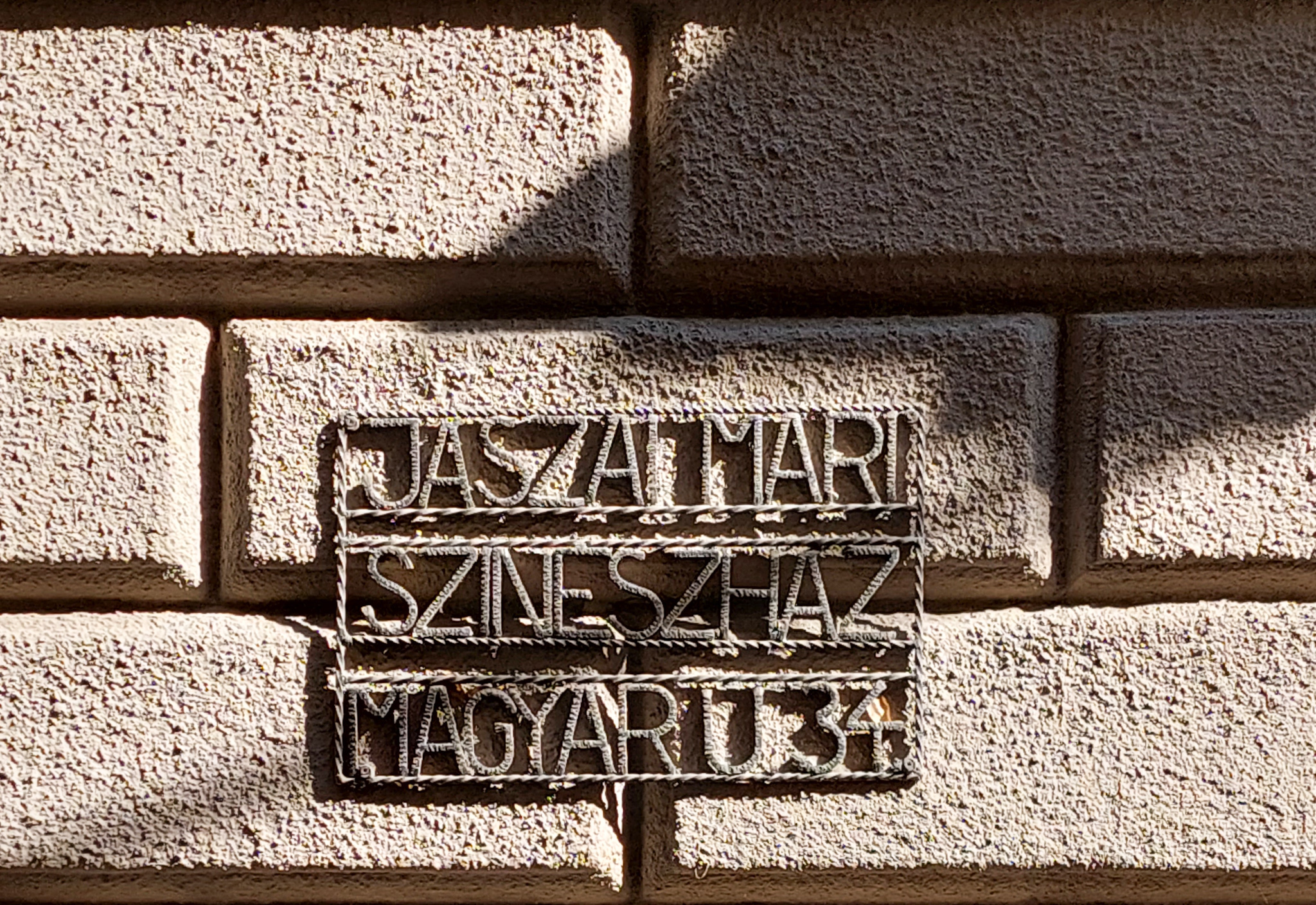
Inscription on the wall of the Acting House on 34 Magyar Street (Photo: Balázs Both/pestbuda.hu)
In the Színművészeti Lexikon (Lexicon of Acting) published in 1929, Aladár Schöpflin described her as follows:
“She was the actress above all else. The actress, once led by the ancient great instinct of spiritual and physical transformation into a world that is all her own, which has no boundaries, in which from the little nanny there can be a queen, where the ugly will be beautiful and the beautiful will shroud herself in ugliness. She was the eternal actress, the whole actress, the absolute actress, who dresses modestly during the day, she did not mind being considered ugly by many, she did not try to please, she did not want to enchant, conquer, or dazzle with her spirit. She was almost feminine in her stern spiritual loneliness, giving up the ancient and eternal desire for femininity: to please everyone! She did not want to be liked during the day and did not want to be ornate. She reserved all her strength, abilities, will for her roles. She said, “They are my masters: my roles, they are my tyrants and masters, they are my great women living a great life; I value them a thousand times more than myself!”

A newspaper article about naming a square after Mari Jászai in the centenary year of her birth (Source: Világosság, 27 November 1950)
At the age of 16, the young girl also went through the hell of the war, she was a handmaid at the Battle of Königgrätz in 1866, that is, she sold supplies to the soldiers, but also cared for the wounded. She then turned to acting. In the “Great War,” that is, World War I, she helped the wounded soldiers with all her might. Schöpflin wrote in the Lexicon of Acting about this period:
“She provided them with underwear, tobacco, sweets, books, recited for them all afternoon. She was not disgusted with suffering, filth, dirt, and did not accept a word of thanks or a medal. Her apartment was a real warehouse. There were sacks of donations she sent to the battlefields.”
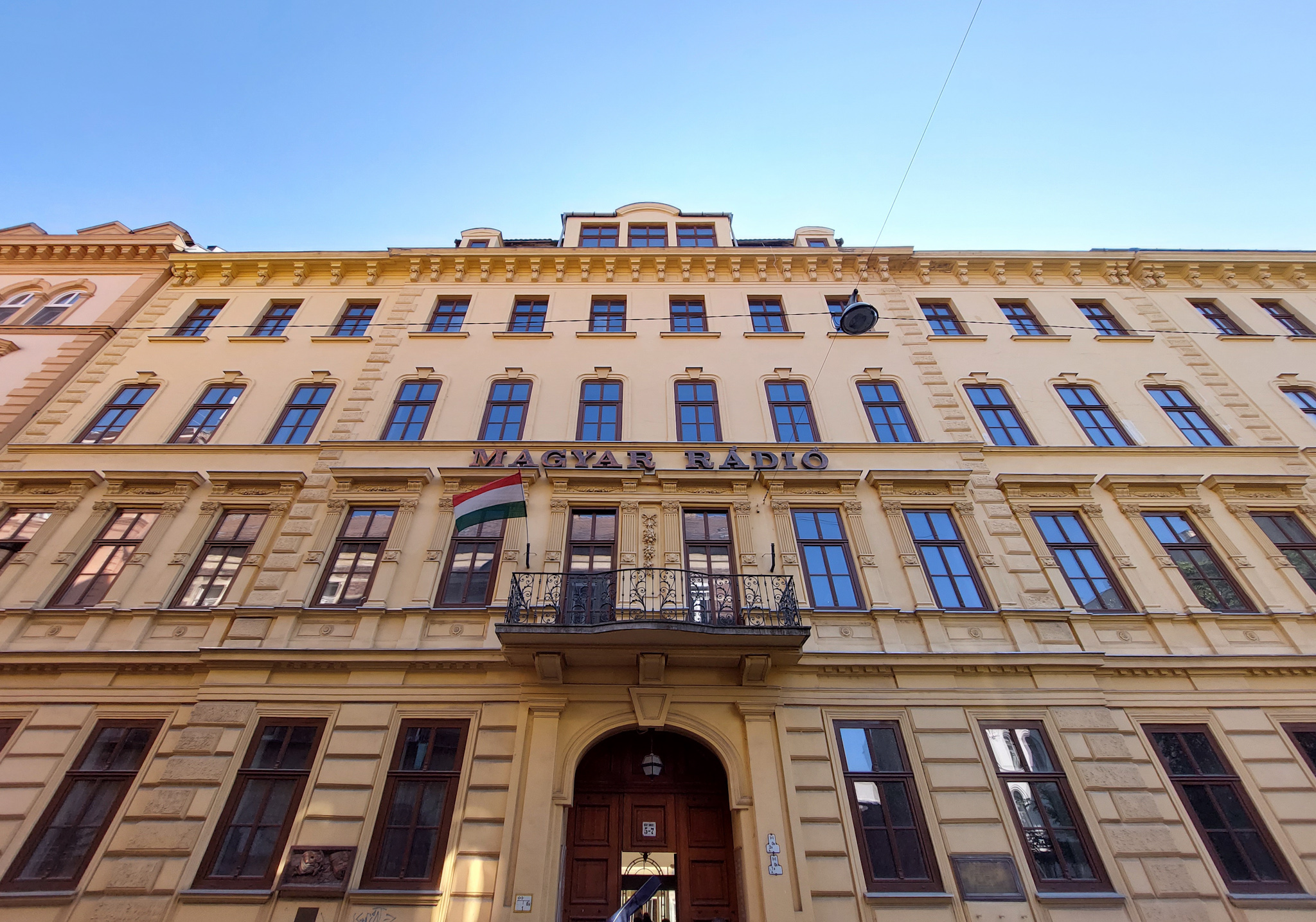 Mari Jászai lived under 7 Bródy Sándor Street between 1880 and 1882, but not in the later headquarters of the Hungarian Radio, but in a house before the headquarters' construction (Photo: Balázs Both/pestbuda.hu)
Mari Jászai lived under 7 Bródy Sándor Street between 1880 and 1882, but not in the later headquarters of the Hungarian Radio, but in a house before the headquarters' construction (Photo: Balázs Both/pestbuda.hu)
Not only did she spend her wealth on this, but she even took out loans.
Mari Jászai lived in many places in Budapest, for a while under 7 Bródy Sándor Street, the place where the headquarters of the Hungarian Radio later stood, in 1883-1884 at 17 Vas Street, where the Semmelweis University Faculty of Health Sciences operates today, and in 1914 she moved to the 5th floor of the Palatinus House at 6 Rudolf Trónörökös Square. The house was built by Emil Vidor in 1911 in Art Nouveau style.
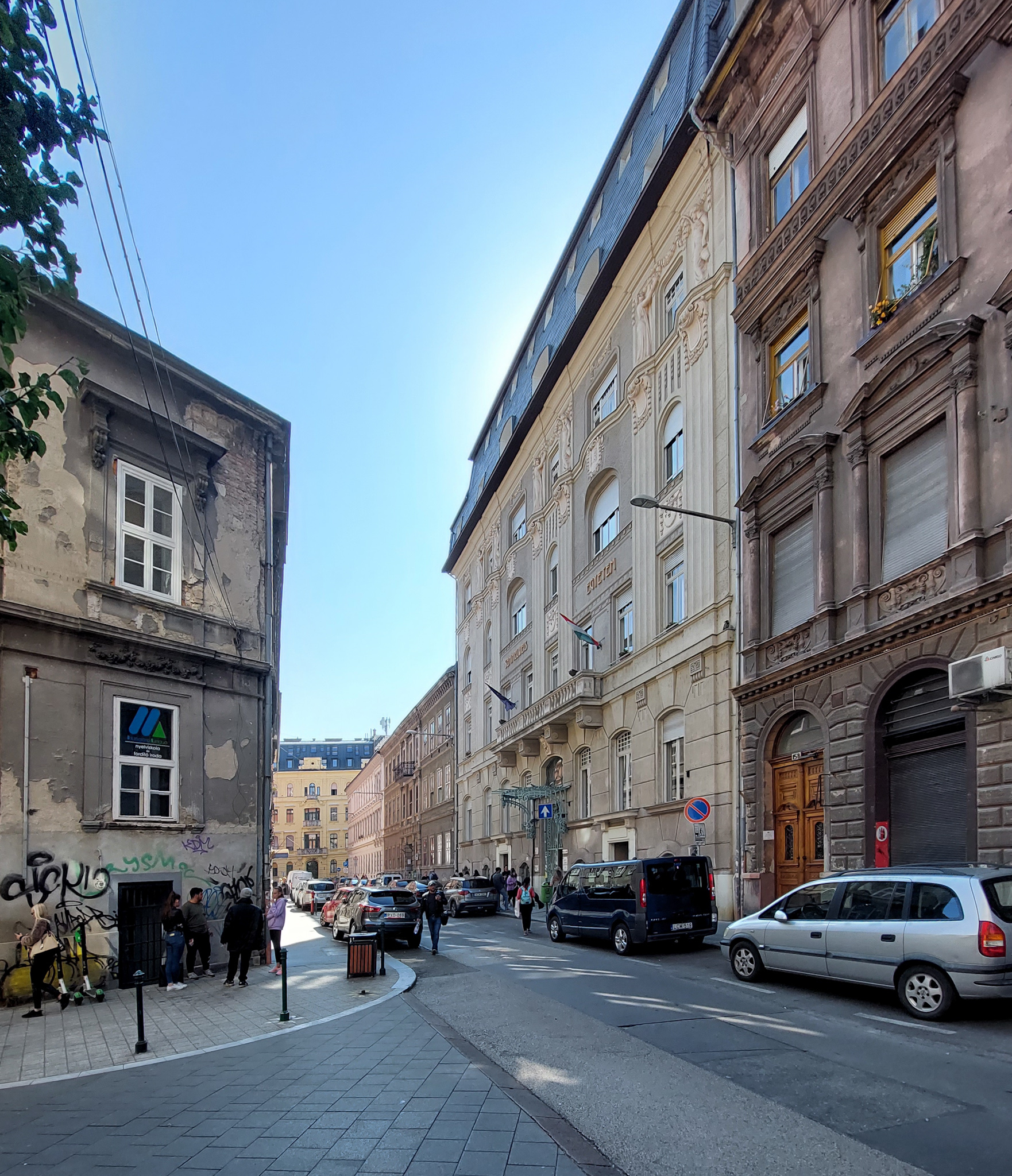
17 Vas Street, where Mári Jászai lived for a short time (Photo: Balázs Both/pestbuda.hu)
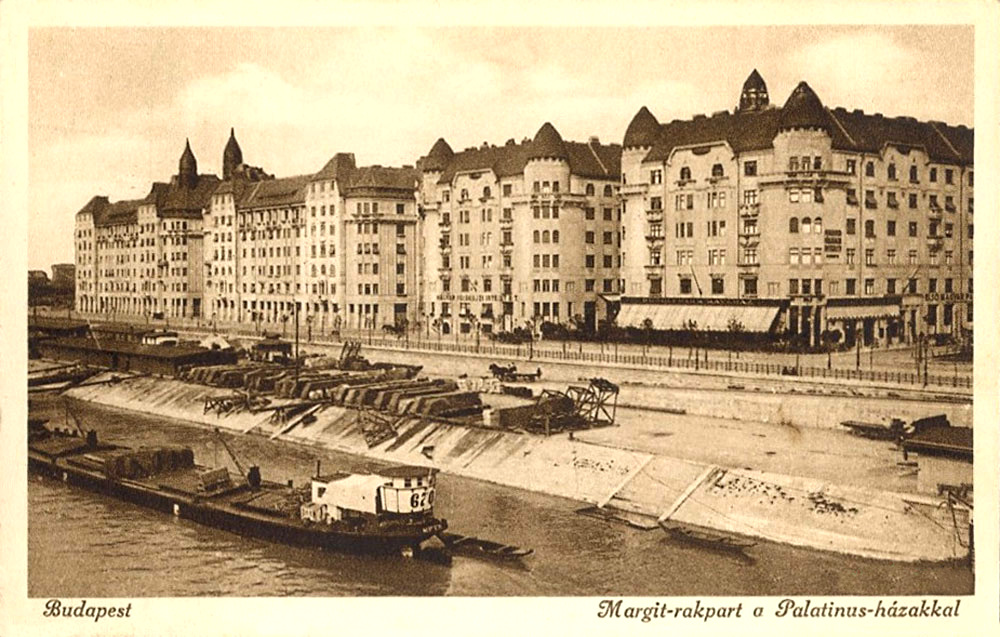
The Palatinus houses in 1927: Mari Jászai lived in the house on the right from 1914 (Contemporary postcard)
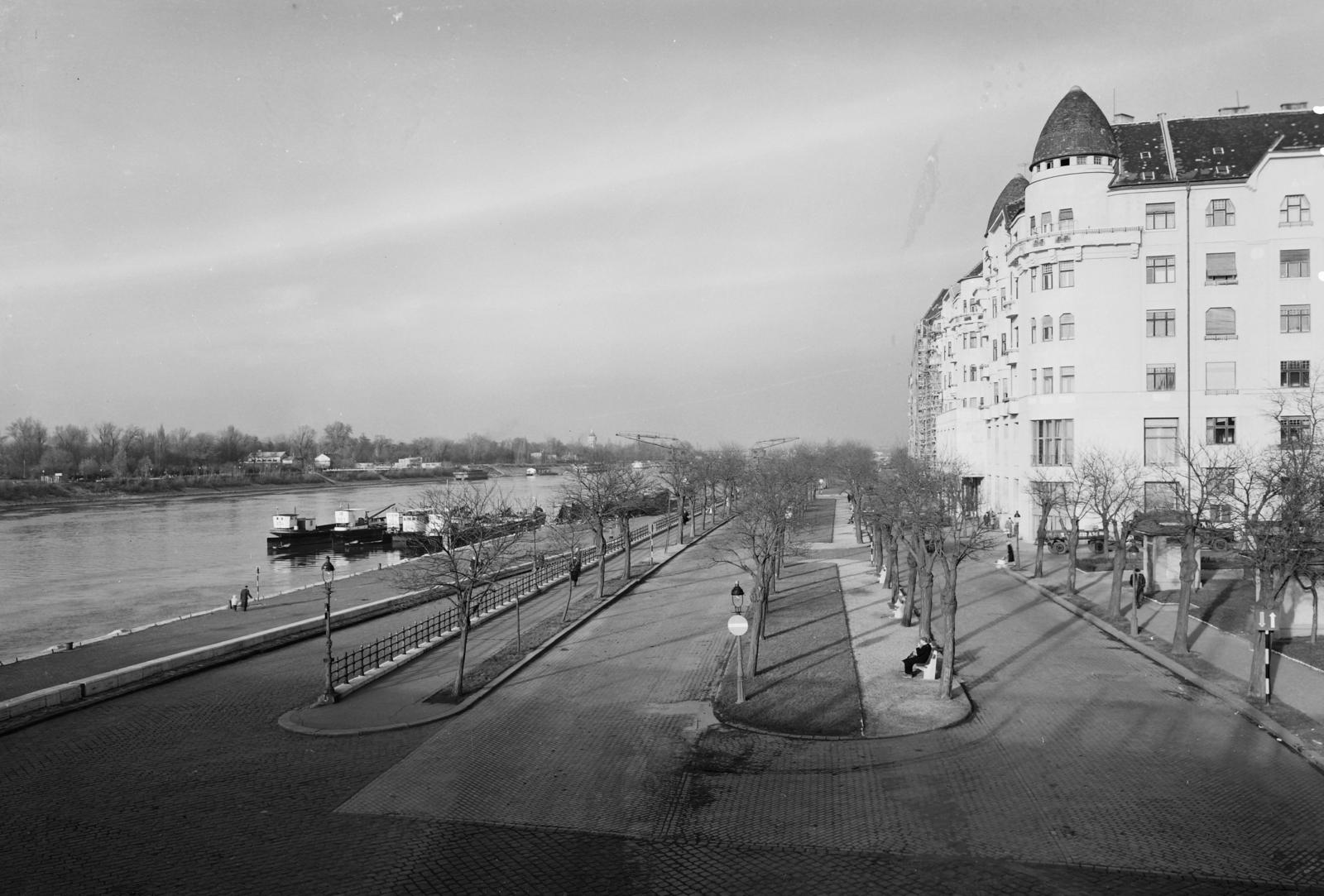
Detail of Jászai Mari Square in 1960, to the right, the Palatinus Houses where the actress lived (Photo: Fortepan/UVATERV)
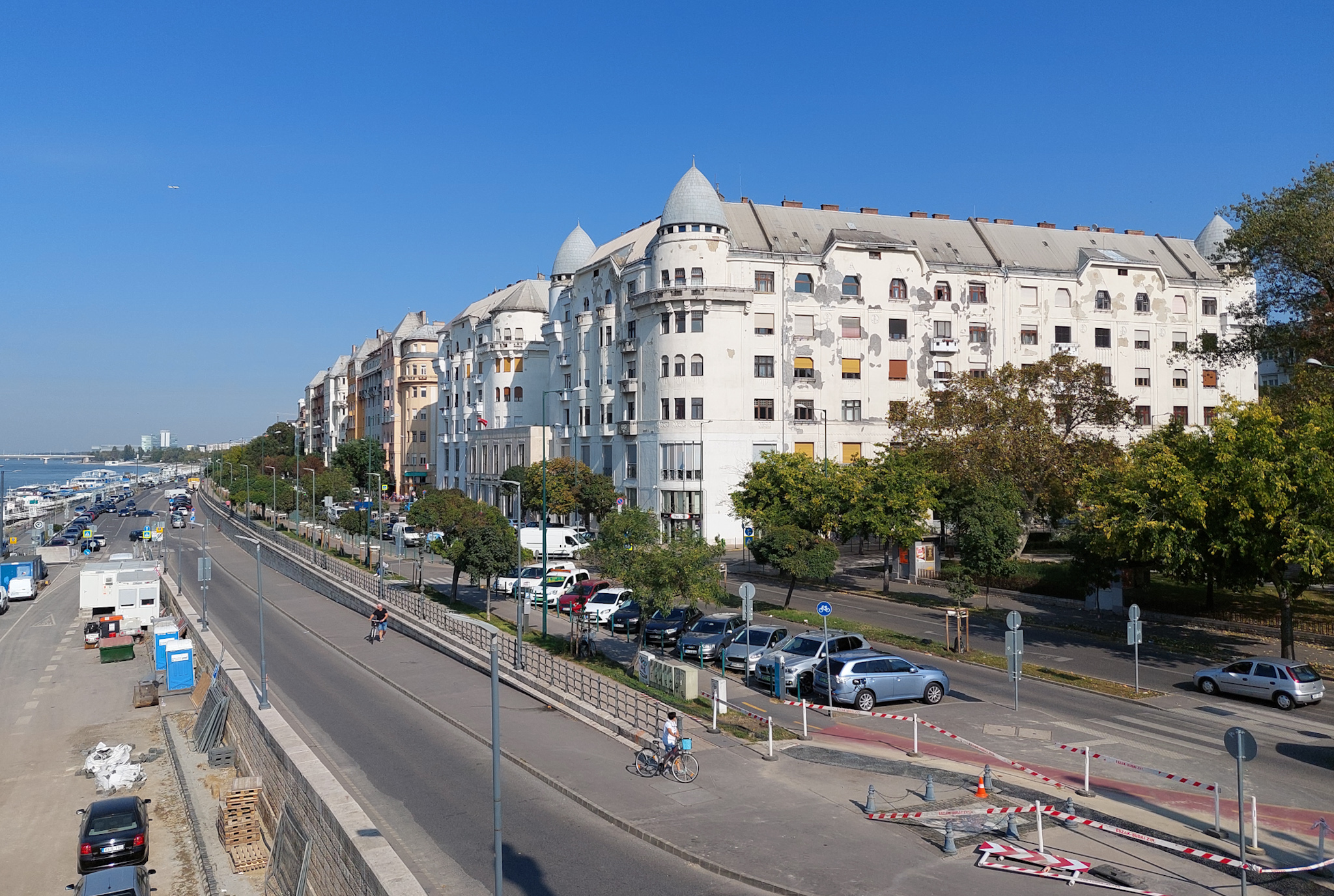
The Palatinus Houses today (Photo: Balázs Both/pestbuda.hu)
Her niece, Gizi Királyné Jászai, gives the following picture of the apartment in the 16 September 1932 issue of Színházi Élet:
“When someone opened Mari Jászai's apartment in Rudolf Square, they found themself in a large, spacious hallway, which was full of plain white wardrobes all around. Opposite - mirror, telephone on the right, doors, rooms on the left. Her ten-metre saloon and the eight-metre bedroom overlooked the Danube; her small dining room overlooked the courtyard. At the end of a ten-metre, closed hallway was the crystal-clear snow-white kitchen…”
In the central place of the apartment hung a portrait of István Széchenyi - she had a copy made after the monumental oil painting by Friedrich von Amerling at the Hungarian Academy of Sciences. The two lion statues of Barnabás Holló also represented a significant artistic value.
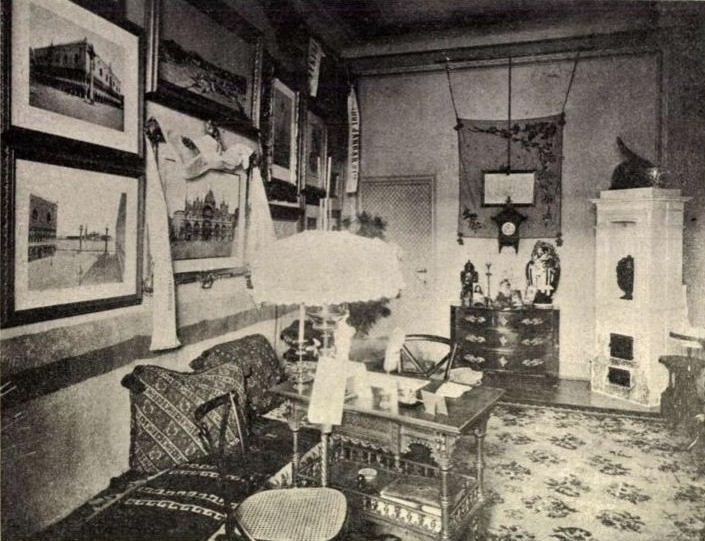
Home of Mari Jászai, photo made by Mór Erdélyi (Source: Magyar Szalon, 1900, vol 17, issue 33, p. 235)
The old actress, although before her death, on 3 December 1925, still played Teréza in the stage version of The Man with the Golden Touch, lived in seclusion. In the 21 September 1924 issue of Színházi Élet, Iván Sipos described the thoughts of Mari Jászai as follows:
“As I left the stage, loneliness awaited me. And I loved this even more than the social life in which I was full of discouragement, nervous disgust, and incompetence. I am also very used to being alone. I have been alone for fifty years… the stage was my real life and the off-stage was just a dream! ”
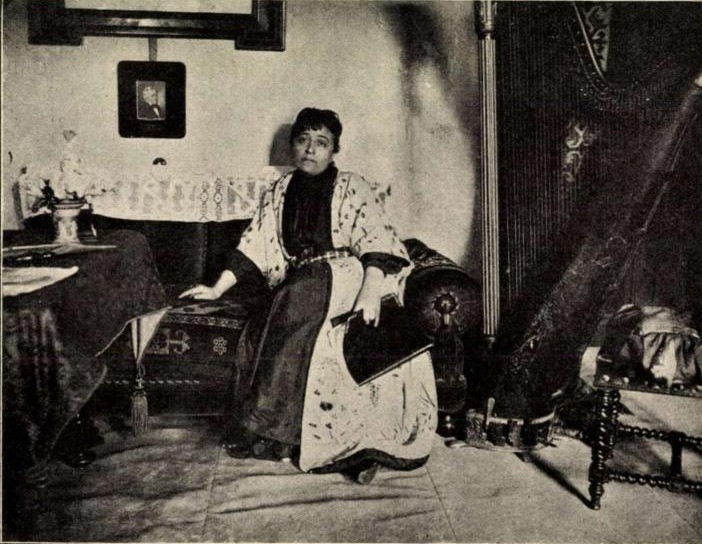
Mari Jászai in her home, photo by Mór Erdélyi (Source: Magyar Szalon, 1900, vol 17, issue 33, p. 234)
In 1922, a country celebrated her half-century anniversary at the National Theatre. She was on stage for the last time in December 1925. The following year she was already overwhelmed by diabetes and died on 5 October 1926.
Consciously prepared for her death, as previously written, she made her tomb as early as 1913, from the stones of the National Theatre, and had already made her own tombstone in her lifetime, also from the stones of the old National Theatre, namely from a column. Mari Jászai summarised her life in her autobiography as follows:
“I started with picking shavings at the carpentry factory in Győr, and I end with feeding chickens in Rábatamás. In the meantime, it was a short flight into the light from which I will soon have to return to eternal obscurity.”
.jpg)
The catafalque of Mari Jászai in Blaha Lujza Square, in front of the National Theatre (Source: Tolnai Világlapja, 1926)
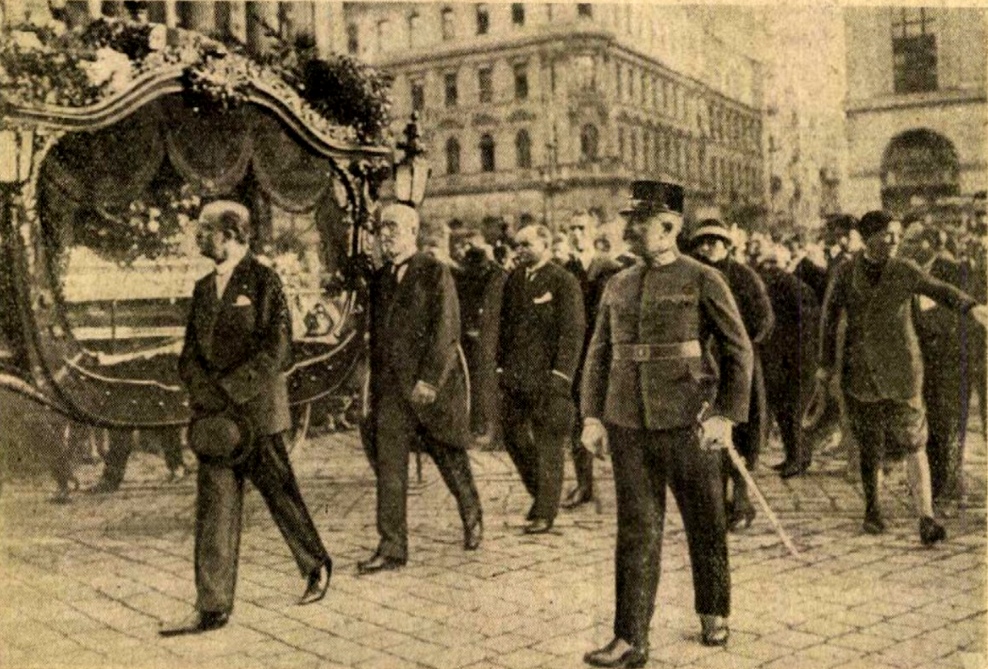
At the funeral of Mari Jászai on 7 October 1926, the car is accompanied by members of the National Theatre (Source: Színházi Élet 18-24 October 1926)
The “short flight into the light" is nearly two generations of working, making art, acting and service. No wonder a memorial plaque was erected at her birthplace in her lifetime. A crater on Venus and the Acting House at 34 Magyar Street is named after her, and a memorial room was set up in Rábatamás, in the house of his brother, cantor József Jászai, where the actress spent a lot of time, and of course, the outstanding actors can receive the Mari Jászai Prize.
The Rudolf Trónörökös Square was renamed on the 100th anniversary of her birth, and since then the public area on the border of the 13th District, at the Pest end of the Margit Bridge, has been called Jászai Mari Square.
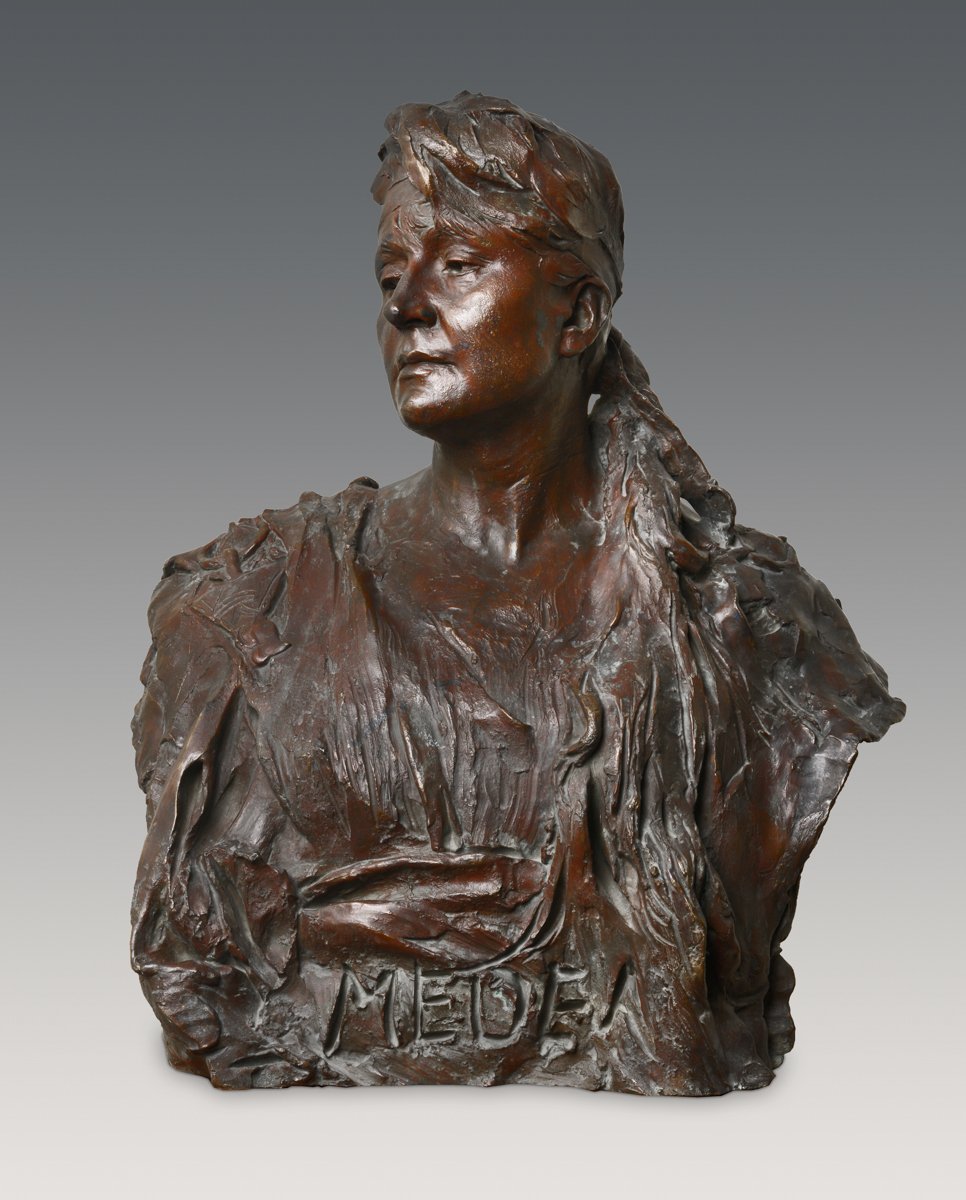
The bust of Mari Jászai was made by Alajos Strobl in 1893 (Source: mng.hu)
Cover photo: Burial of Mari Jászai (Photo: filmhiradokonline.hu)

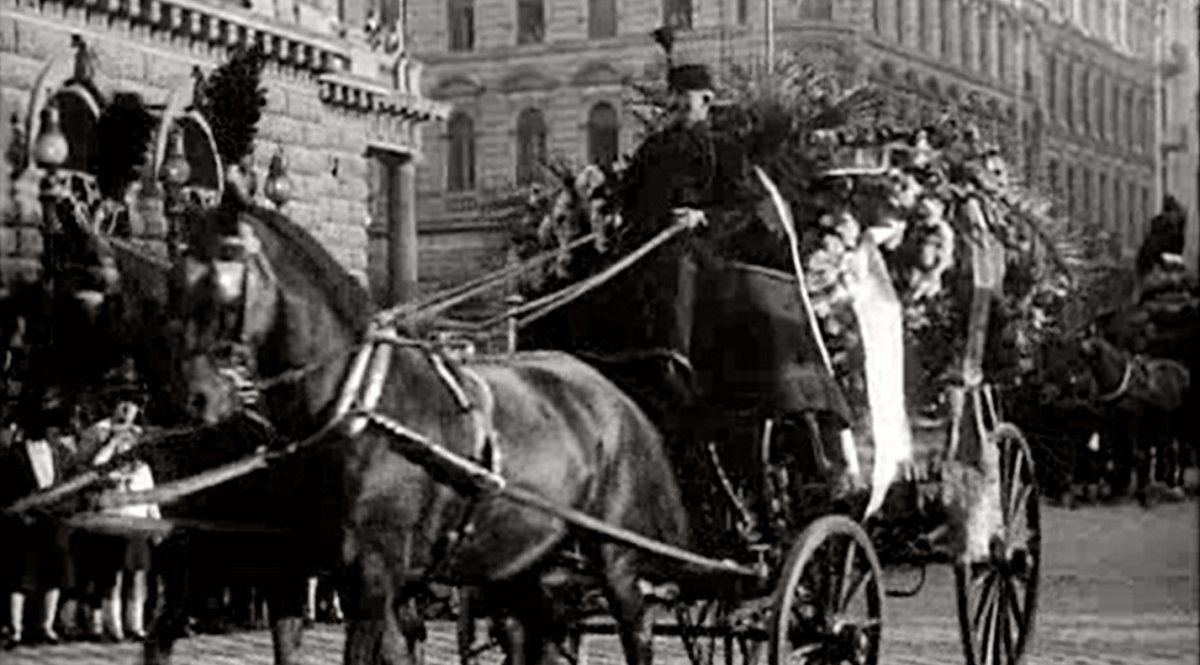



































Hozzászólások
Log in or register to comment!
Login Registration